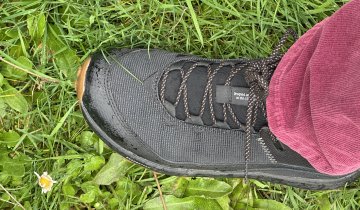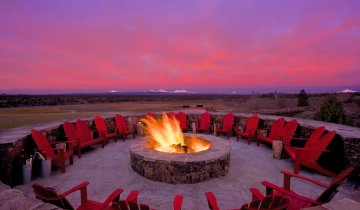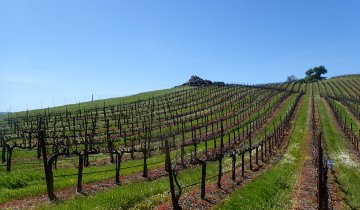When Candace Campo’s mother was only seven years old, she had terrible impetigo. Elders wrapped her whole body in frog leaves and cured her skin condition.
Frog leaves? Plant cures? Join Candace’s Talking Trees Walk in Stanley Park and you learn about medicine and more.
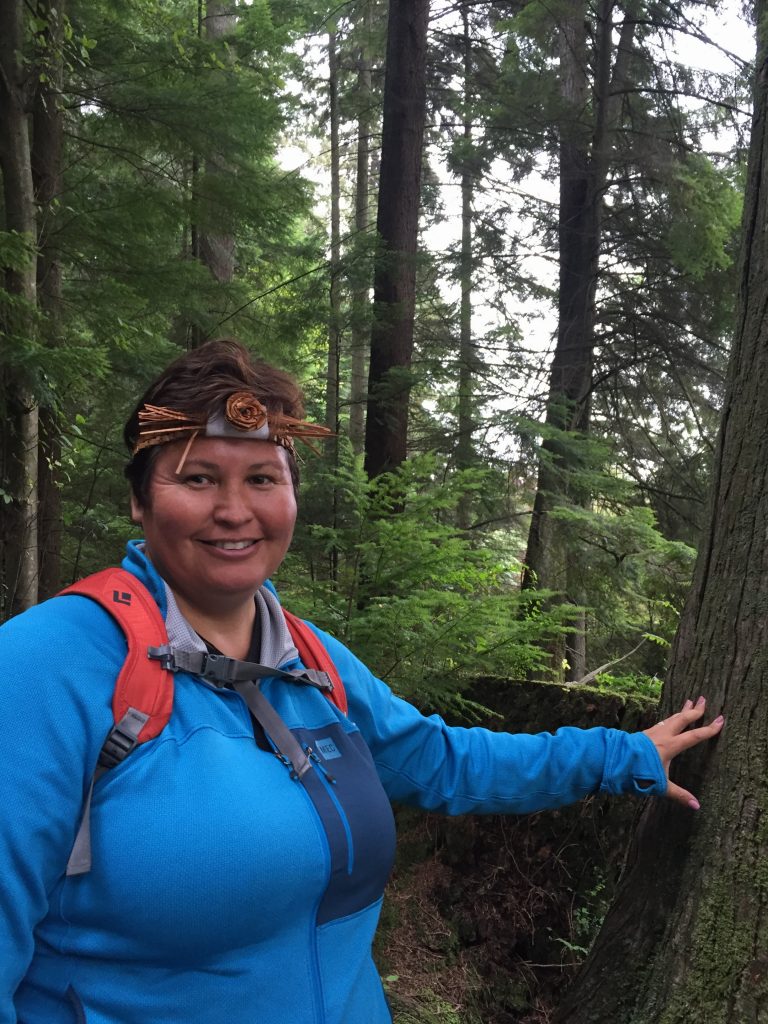
Candace Campo of Talaysay Tours
Candace owns a small tour company called Talaysay Tours, which offers opportunities to learn about First Nations people in Vancouver. Candace was born 50 km north of Vancouver on British Columbia’s Sunshine Coast. She leads tours there, too.
I joined her for the Stanley Park tour, which she offers daily. It was a tiny group, just Candace, a visitor from Montreal, and me. Candace led us down trails in the park, stopping to point out important plants, and teaching us about First Nations ways.
Respect and Appreciation for Plants
Plants provided different types of food, depending on the season. In spring, fresh green shoots came up. These were vital to early people, who depended on them as an important food source. “Even 200 years later, I was raised to have a real appreciation of these shoots that come out in spring,” Candace told us. In summer, the berries came. In fall, people ate stems and roots.
Stanley Park has been a park since 1888. But it’s the heart of the homeland of the Squamish people.
Candace explained to us how First Nations people preserved berries into fruit leather, and how a single leaf could be turned into a tiny basket. She pointed out the differences between a Douglas fir – called the fire tree because it produces lots of heat and burns well – and the Western hemlock, or “no fire tree,” because it doesn’t. However, the hemlock has delicious lemony needles, which we sampled. She explained how plants were enlisted for all kinds of utilitarian purposes. “Skunk cabbage leaves were like our wax paper, and ferns were like our paper towels.”
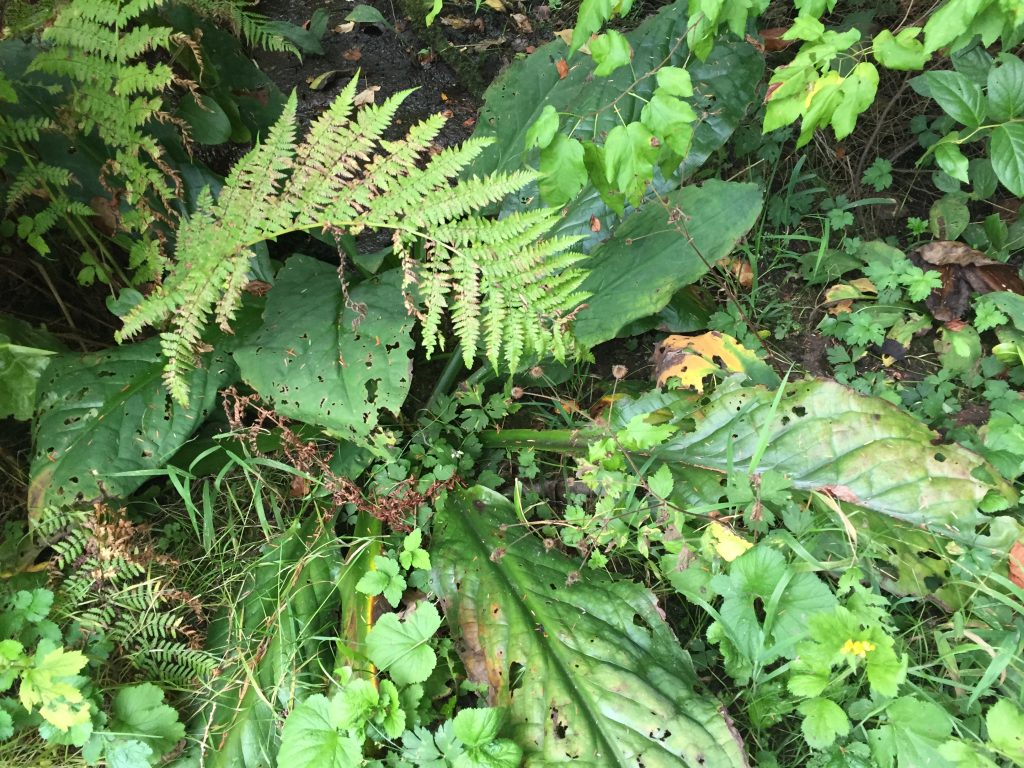
Skunk cabbage and fern, the wax paper and paper towels of the Native world.
Candace has a very calm and stately presence. Unlike some tour guides, she seems perfectly comfortable with periods of silence. She wore a red cedar headband, made by an elder named Charlie, which was meant to represent her family and community and to show guest respect. It also helps her tour participants identify her as the tour leader when they meet in the park’s bus loop.
Good Medicine
The foods of the forest did more than nourish bodies. “We consider food medicine,” Candace told us. The role of cooks was to give medicine that promoted health and wellness, both physical and spiritual. “Food is the ultimate preventative medicine.”
Two hundred years ago, the lives of First Nations people were so much more connected to plants and animals than people are today. “They help support your life, your family,” Candace said.
This was a lovely tour that made me slow down and really look at plants in a new way. And spending time in Candace’s presence was delightful. Her company’s other tours include a First Nations Interpretive Paddle, Full Moon paddle, and multi-day kayaking tours.
